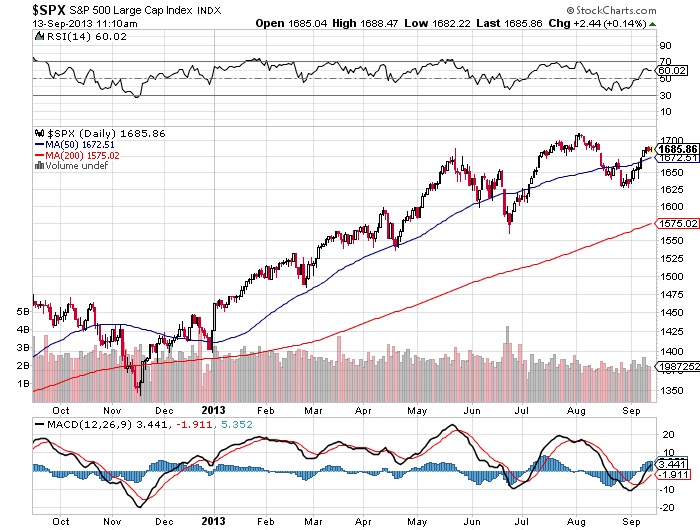
Looking back over the past year, it’s quite amazing to see the shift in market sentiment. Last year, many investors were quite skeptical of the market, best represented by the S&P 500, and this led to cautious market sentiment.
This year, with the S&P 500 hitting new all-time highs, market sentiment has certainly improved substantially. But the question is: can the move continue?
Obviously, nothing moves up in a straight line. However, much of the market sentiment has been built on the belief that the economy will rebound strongly next year. Now, there are some signs emerging that suggest this might not be the case.
While the economy has improved substantially since its depths during the Great Recession, there’s much more work to be done.
Consumer spending is a large part of the economy, and many companies within the S&P 500 are impacted by it. The latest data by the U.S. Department of Commerce indicates that retail sales for the month of August increased by only 0.2%—a disappointment versus expectations of an increase of 0.5%. (Source: U.S. Department of Commerce web site, last accessed September 13, 2013.)
So now we have a situation where the largest part of the U.S. economy—consumer spending—appears to be slowing. If this continues, this could be a dangerous scenario, as market sentiment is clearly in the camp that both revenues and earnings will reaccelerate.
For the S&P 500 to continue moving upward, we need to see revenue growth in addition to earnings growth. Much of the increase in earnings that has helped propel the S&P 500 upward was due to cost-cutting measures. In general, revenues have remained stagnant over this past year.
If the consumer begins to pull back on spending and companies start facing higher input costs, this would be a negative not only for revenues, but for earnings as well. I don’t believe that market sentiment is taking this possibility into account.

Chart courtesy of www.StockCharts.com
One interesting note regarding market sentiment and the S&P 500 is that as stocks made new highs in early August, the moving average convergence/divergence (MACD) did not follow suit.
This type of negative divergence does not necessarily mean that the S&P 500 has to drop, but it is a worrisome indicator that, to me, is indicative of the very real possibility that market sentiment and momentum is beginning to shift away from the bullish camp.
Unless we begin to see some growth in both revenues and income soon—which needs to come from higher wages in addition to accelerating jobs growth that prompts consumer spending—I think it will be increasingly difficult for companies to increase revenues going forward.
This article Why the Roaring S&P 500 Is Really Showing Signs of Weakness was originally published at Investment Contrarians
The following article is from one of our external contributors. It does not represent the opinion of Benzinga and has not been edited.
No comments:
Post a Comment